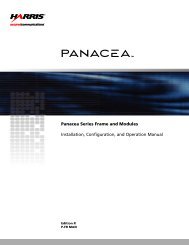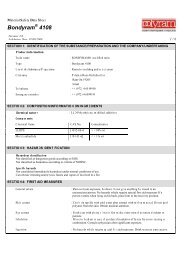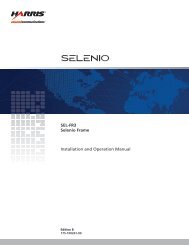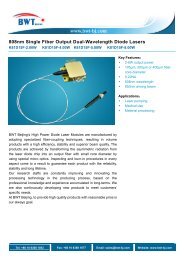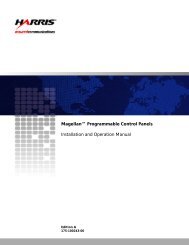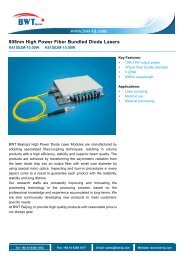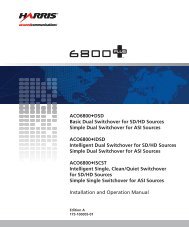Nanogaps controlled by liquid nitrogen freezing and the ... - biznine.kr
Nanogaps controlled by liquid nitrogen freezing and the ... - biznine.kr
Nanogaps controlled by liquid nitrogen freezing and the ... - biznine.kr
Create successful ePaper yourself
Turn your PDF publications into a flip-book with our unique Google optimized e-Paper software.
T. Chang et al. / Sensors <strong>and</strong> Actuators A 192 (2013) 140– 144 141<br />
Fig. 1. Schematic fabrication processes for two types of sensors. No pre-strain is applied to <strong>the</strong> Pd/PDMS before LNF for sensor A, while <strong>the</strong> Pd/PDMS is elongated <strong>by</strong> 25%<br />
before LNF for sensor B.<br />
sputtering. The Pd film size was 10 mm × 10 mm. The chamber was<br />
kept under ultra-high vacuum (4 × 10 −8 Torr) before Pd deposition<br />
<strong>and</strong> <strong>the</strong> working pressure was 2 × 10 −6 Torr. Pd deposition was<br />
conducted under an Ar flow of 14 sccm (purity: 99.9999%) at a<br />
DC power of 20 W <strong>by</strong> <strong>the</strong> use of a highly pure Pd target (purity:<br />
99.99%) [15].<br />
After all samples went through <strong>the</strong>se processes, <strong>the</strong>y were<br />
divided into two different categories. For half <strong>the</strong> samples, 2–3<br />
<strong>liquid</strong> <strong>nitrogen</strong> droplets were dropped on <strong>the</strong> Pd film. The o<strong>the</strong>r<br />
samples were put under a tensile strain (25% in this case) exerted<br />
<strong>by</strong> a tensile machine, <strong>the</strong>n <strong>liquid</strong> <strong>nitrogen</strong> was dropped on <strong>the</strong> Pd<br />
film. The processed films were brought under a scanning electron<br />
microscope (SEM, JEOL Ltd., JSM-6500F) <strong>and</strong> an optical microscope<br />
(OM, Olympus Co.) for close examination of surface morphologies.<br />
The H 2 sensing system consisted of a gas chamber with a capacity<br />
of 250 ml <strong>and</strong> H 2 <strong>and</strong> N 2 mass flow controllers. The gas chamber<br />
was equipped with a gas inlet <strong>and</strong> outlet, <strong>and</strong> a gas mixture of<br />
H 2 <strong>and</strong> N 2 flowed into it through <strong>the</strong> inlet after <strong>the</strong> gases were<br />
intermixed at a desired ratio. When <strong>the</strong> chamber pressure was<br />
higher than ambient pressure, a check valve opened, thus <strong>the</strong> chamber<br />
was kept constant at ambient pressure. The purity of both<br />
H 2 <strong>and</strong> N 2 gases was 99.9%. The real-time electrical resistance or<br />
Fig. 2. SEM images of nanogaps formed in (a) sensor A <strong>and</strong> (c) sensor B. (b) <strong>and</strong> (d) are zoom-in images for selected parts of sensors A <strong>and</strong> B, respectively. For both sensors,<br />
<strong>the</strong> width of nanogaps is shown to be less than 100 nm.



